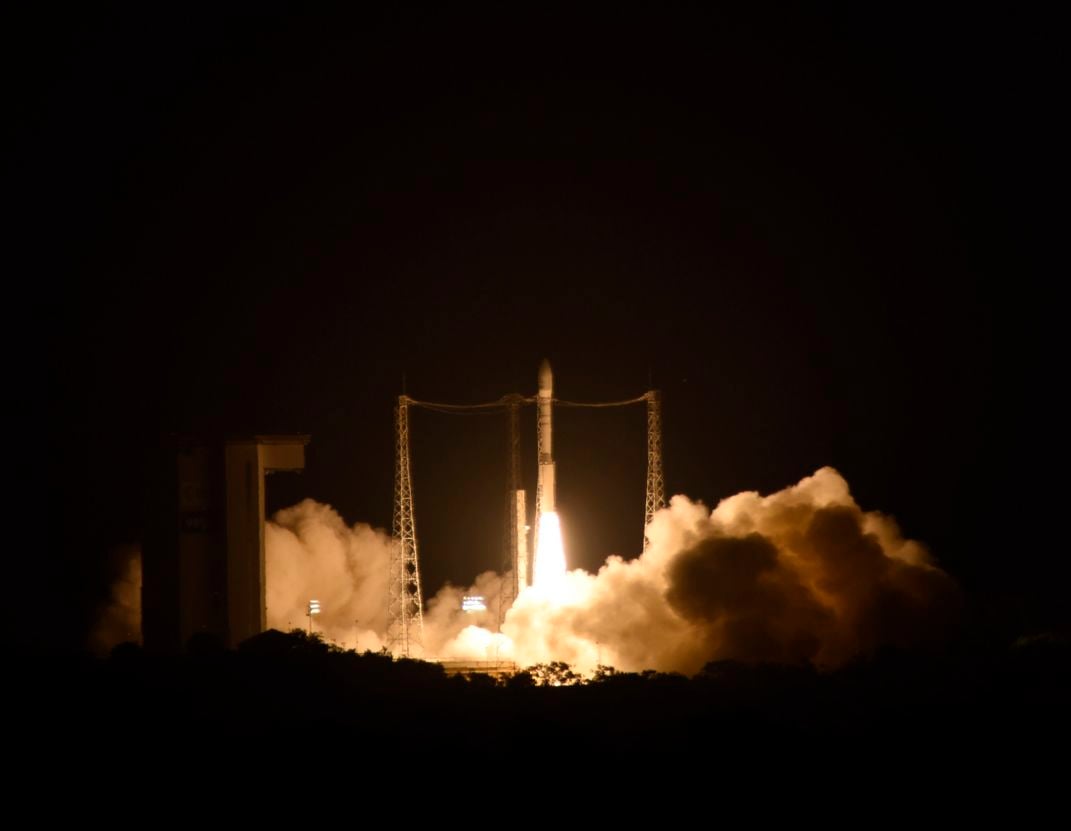A Space-Based Physics Lab Could Help Scientists Study How Gravity Warps Spacetime
The LISA Pathfinder Probe could help reveal the ripples caused by black holes and supernovae
/https://tf-cmsv2-smithsonianmag-media.s3.amazonaws.com/filer/57/db/57dbd6d7-29c6-4df0-802f-ea242ec9a4da/42-76338944.jpg)
Early Thursday morning, a European Space Agency rocket blasted into orbit carrying a satellite equipped with a physics lab that could help change the way astronomers scan the skies. If successful, the LISA Pathfinder probe could help scientists develop ways to detect ripples in spacetime made by supernovae and merging black holes.
As Albert Einstein predicted in the General Theory of Relativity, extremely energetic events like these likely produce gravitational waves that ripple through the fabric of spacetime. Right now, most astronomers examine distant objects in space by detecting variations of electromagnetic radiation—like visible or ultra violet light.
But because electromagnetic radiation is distorted by anything lying in its path, directly observing distant stars, black holes, planets and the like is a challenge.
However, because gravitational waves would pass through anything, detecting them could give scientists a powerful tool for studying objects and phenomena in space that would be otherwise impossible, Maddie Stone writes for Gizmodo.
“Gravitational waves are the most direct way of studying the large fraction of the universe which is dark,” Bill Weber, a scientist at the Università di Trento who worked on LISA Pathfinder tells Stone. “Black holes, neutron stars, and other objects that don’t emit light sound exotic, but they are believed to be a rather typical destiny for stars in the sky.”
The problem with detecting gravitational waves is that they are extremely faint. Studying them from Earth also has its own special challenges. Gravitational “noise”—everything from the movement of the oceans and atmosphere to the vibrations made by our cars—floods the planet, Weber tells Stone. But when the LISA Pathfinder reaches its destination more than 900,000 miles away from Earth, the relative silence could give scientists the clues they need to figure out just how to find these elusive gravitational waves.
The single experiment the LISA Pathfinder will perform is deceptively simple. The probe will measure and maintain a 15 inch distance between two small gold-platinum blocks in zero-gravity free fall. It is equipped with a laser system to detect changes smaller than the width of an atom. It’s like tracking the distance between One World Trade Center in New York and the Shard building in London while tracking changes as small as a fraction of the width of a hair, Jonathan Amos explains for the BBC.
But while the probe won’t detect gravitational waves themselves, this experiment could demonstrate that it is possible to accurately measure the distance between two test objects with extreme precision.
“There’s a whole series of physics of small force measurements that we want to investigate so we can turn around to ESA and say, ‘this works, these are the physical effects that limit us, and we’ve quantitatively studied them,’” Weber tells Stone. “If LISA Pathfinder is successful, that’s a really important milestone.”
The probe will spend the next six weeks traveling to a stable orbit between the sun and the Earth. By March, ESA scientists will start taking measurements to determine the lab’s limits with the hope that it will pave the way for a follow-up mission in the 2030s to finally study gravitational waves themselves.
Editor's note, December 7, 2015: The title and summary of this story were corrected to more accurately show that the LISA Pathfinder probe doesn't directly measure gravitational waves but is a technology that could eventually help scientists study how gravity warps spacetime.
